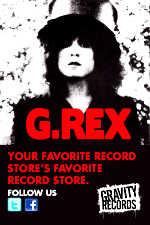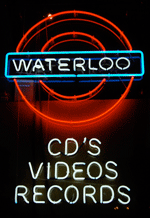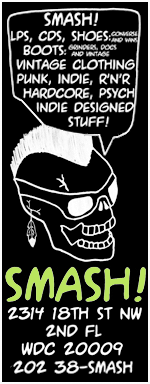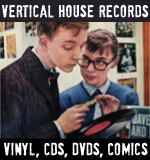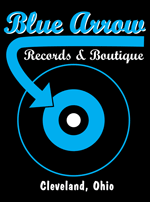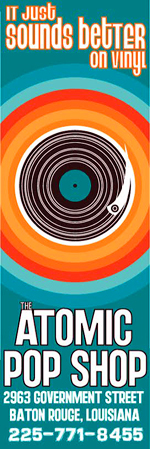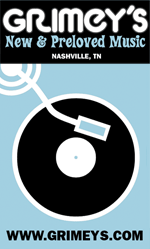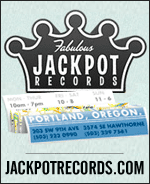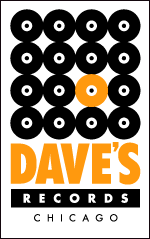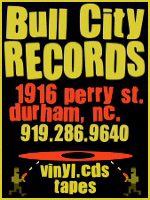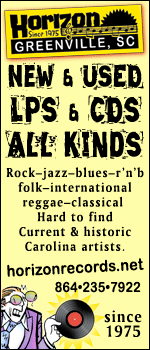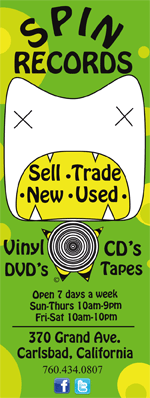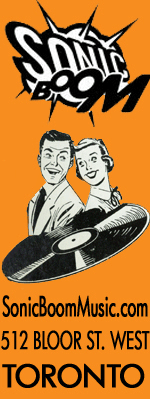In 1968 The Firesign Theatre, a comedy troop consisting of Phil Austin, Peter Bergman, David Ossman, and Philip Proctor, began an excellent string of releases with Waiting for the Electrician or Someone Like Him. While not their best work, it is the place any newbie should begin. The smart and surreal environments the disc offers remain unique in the comedy universe, and the rewards are sharply in tune with the long-playing vinyl format.
The comedy album’s rate of productivity remains strong enough in the present that one need not worry over the general health of the form. Yes, people still want to laugh, and to this day the desire of comedians to offer up their art through the medium of records remains, even as the status those performers acquire through the making of said documents has been lessened substantially.
Indeed, the heart of audio-only comedy continues to beat rather strongly, but what was once something like a cultural institution is now closer to a niche genre, largely because the market has always been dominated by the style known as stand-up. Commencing approximately in the 1960s, the boom for stand-up LPs lasted for decades, mainly because it was the easiest way to hear these comedians at extended length, and just as importantly, in uncensored form.
But comedy as performed in night-clubs, halls or auditoriums is also Performance Art, and by far the most widely accepted example of this often derided mode of expression. Throughout its peak years, comedy fans had three main options; the attendance of a show, catching a dose via television, most commonly on late-night talk shows and later premium cable services like HBO, and the purchase of LPs for home enjoyment.
I once chatted with a guy on the subject, and he related how he and his wife would host get-togethers around the arrival of scores of comedy platters, a few of them now rated as cornerstones in the field, with the attendees predictably having a stone blast of a time. Where an appearance on The Tonight Show would give these folks a nice taste, those spots were obviously condensed and just as often streamlined in accord with network TV’s standards of decency, making the albums far more effective in injecting the comedian’s artistry right into your brainpan.
And rather than just jokes and shtick, the recs were often containers of a distinct worldview. Amongst my favorites are LPs by Dick Gregory, Mort Sahl, Lenny Bruce, George Carlin, Redd Foxx, Woody Allen, Bill Cosby, Albert Brooks, Steven Wright, Bill Hicks, and my personal gold standard Richard Pryor. I know that it’s not an unusual list, but the LPs of these individuals, especially when heard in the company of other human beings, could stir up the emotions as strongly as any musical release.
But please don’t let the above group of names suggest that I’ve no taste for more recent comedic offerings. Far from it actually, but I also can’t deny that the total ease in sourcing the whole Performance Art enchilada via numerous internet streaming services has considerably lessened the impact of comedy records upon my current reality.
Yes, lost by dialing up clips via computer is the added value of imagining the comedian at work and maybe even picturing in the mind’s eye what a highly boisterous laugher in the audience might look like, but what’s gained by adding vision to the equation is far more intrinsic to the medium than what’s lost (and hopefully replaced at some level) when a great work of literature is adapted into a movie.
Because actually getting to see a Pryor or Carlin or Louis CK or particularly an anti-comedian like Neil Hamburger doing their thing is vital to the entirety of their art, and in this sense stand-up comedy LPs have always been something of a replacement. However, it’s slightly less cut-and-dried when the focus shifts to the monologue and/or character-driven styles of Bob Newhart, Lilly Tomlin, Jonathan Winters, and the great cult figure Brother Theodore, and the situation becomes even stickier as attention is given to the field of skit-comedy.
Most of the examples in this sub-genre were made by duos or teams that retained solid footing in the visual realm. For a few examples, there’s Mike Nichols and Elaine May in live performance and Monty Python through their TV show and later via movies, the platform that also brought Cheech and Chong their greatest success.
In these instances, long-playing wax was but a single resource in a wider creative arsenal. By contrast, the one outfit that inherently thrived upon and in fact required audio-only design for full realization was The Firesign Theatre. Starting in the 1968 they issued a string of fantastic albums that help to define their era while also invigorating a neglected and worthwhile art form.
Specifically, they transformed the radio show and in so doing brought it directly into the countercultural sphere. Many now associate non-musical radio entertainment as the tranquil and safe environment of grandparents absorbing Ozzie and Harriet and Burns and Allen, but it was frankly much more than that. For starters, it was a tool in the kit of one of the 20th century’s greatest artists, Orson Welles, and beyond that the radio dial also offered-up rich and diverse narrative programming, much of it hard-boiled (a la detective novels and film-noir) and sometimes downright eccentric in form.
It was really quite like the current ballyhoo over Breaking Bad or Mad Men, except that if one wanted to keep up with the story, there was simply no alternative to planting one’s ass in a hopefully comfortable chair every week at the designated time. By the ‘60s though, radio’s grip on non-musical, sports or news related content had been solidly usurped by television, with the invention naturally far more successful in bringing the appeal of motion pictures into the living space.
So the format’s potential as something other than a vessel for songs, ballgames, and current events was left to the fringe, and that’s where The Firesign Theatre got their start, doing shows on the long-defunct “underground” station KPPC and the still-extant Pacifica Radio outlet KPFK. Unsurprisingly, both were based in California, and to describe Firesign’s tenure on major label Columbia as a by-product of the late-‘60s vogue for all things hippie is indeed correct.
But beginning with their ’68 debut Waiting for the Electrician or Someone Like Him, the troop were vindicated as something much more than just an expression of the period’s burgeoning youth movement, even as they provided an immersive experience that could be accurately portrayed as psychedelic in effect.
Surreal is another way of assessing their output, and while this lacks the specificity of their ‘60s emergence and congruence, it also clarifies how The Firesign Theatre were pretty far from being symbolic of acid-inspired excess. To elaborate, while their work could often be wildly disorienting, it’s also fairly clear that its creation required the intense dedication of sober minds.
And Waiting for the Electrician, notable as the only effort issued under the spelling The Firesign Theater, remains the best entry point to their off-kilter universe. It reveals them as brimming with smart ideas and wielding a delivery that’s already precisely honed, but the album’s four selections are also less grandly-scaled, rapid-fire, and abstract then what was to come. This makes it the natural place to get acclimated, and anybody receptive to its charms will be dying to hear more.
The LP’s opening track “Temporarily Humboldt County” is also one of their more relaxed and least bizarre numbers, instead being a savvy political piece on the subject of imperialism and its nasty fallout. The ugly and genocidal treatment of native peoples surely falls into the region of “tough comedy topics,” but Firesign pulls it off, applying just the right dosage of the scathing to an approach that’s insightful and questioning rather than angry.
Derision can be easily detected as part of the overall illuminating thrust, but they also wisely understand that to overdo the dyspeptic would be, in the parlance of the time, a real bring-down, man. However, sarcasm is more heavily employed during the satirizing of the counterculture that is “W.C. Fields Forever,” but they also don’t totally lambast the issue, employing enough restraint that all but the most over-sensitive of hippies could and did appreciate the gesture.
To be sure, a large amount of bullshit was occurring amidst the era’s progressiveness and the cut skewers it in a manner that’s been occasionally compared to the Mothers of Invention. I do agree, but will note that Firesign are less acerbic than Zappa could regularly be, exuding a playfulness that’s more user-friendly than the stinging and sometimes arrogant barbs of Frank.
Zappa’s humor, before it hardened into a tired blend of risqué and snide, was deeply influenced by the biting wit of the pre-obscenity trial plagued Lenny Bruce. But The Firesign Theatre, in addition to exploiting the possibilities of the radio show, was shaped by the lighter touch of the hugely popular satirist Stan Freberg. So while they ended up making some of the strangest comedy records of all time, the Theatre wasn’t really striving for provocateur stature, and while definitely edgy, their work is hardly ever bitter.
And that’s pretty essential to the success of side one’s closer “Le Trente-Huit Cunegonde.” The joke, which posits the ‘60s movement as the dominant culture rather than the alternative, with cops arresting citizens for not being groovy, parents ostracizing their kids for the open display of squareness and a ludicrously with-it government air-dropping eight million hardbound copies of The Naked Lunch onto the “last stronghold of unhip resistance,” requires a deft touch, and it basically avoids dark humor for wild, and yes weird, flights of imagination.
But the propensity for surrealism is realized most fully on the flip side’s sole title cut, which holds twisted juxtapositions that extend the bent attitudes of The Marx Brothers into the equally irreverent milieu of Monty Python and alternates obscure cultural references with puns and non-sequiturs, along the way providing the tip-off to the expansive material that would grow significantly on ‘69’s How Can You Be in Two Places at Once When You’re Not Anywhere at All. After that, the gust was refined even further on their greatest moment, the following year’s Don’t Crush That Dwarf, Hand Me the Pliers.
In 1983, that slab was apparently rated in The New Rolling Stone Guide as the greatest comedy album of all time, and while the distinction might read like flagrant West Coast post-hippie homerism, it’s actually close to the truth. Because Don’t Crush That Dwarf is very likely the most multifaceted release to ever inhabit the comedy section of the record store, with Firesign attaining heights of complexity that even after numerous listens are resistant to complete absorption.
I can’t say it’s the greatest ever, since I rate a few Pryor discs, Albert Brooks’ Comedy Minus One and even the United Artists 2LP Woody Allen collection The Night Club Years 1964-1968 just as highly, but I do easily consider Don’t Crush That Dwarf as the most ambitious, and the repeated exposure it requires is inseparable from the grand tradition of home listening.
But Waiting for the Electrician or Someone Like Him endures as superb record in its own right, and again, it’s the logical beginning. Furthermore, there’s essentially nothing around today that’s comparable, and for that matter, hardly anything back then was similar either. Some have compared them to the National Lampoon, but I find the connection inapt, though I must also confess that the sound of Harvard-boys behaving badly doesn’t hold much personal appeal.
Plus, history has shown that the Lampoon was best cut out for movies, though outside of the solid but extremely overrated Animal House I don’t really enjoy those either. Firesign did dabble in film, with the team contributing the screenplay to the ’71 western oddity Zachariah and a sketch by Proctor and Bergman lending the blueprint for the forgotten ’79 John Ritter-starring turkey Americathon, but it’s always been plain that the Theatre’s strong-suit was radio, and by extension the LP.
Some will complain that the relentlessness of those obscure cultural references is off-putting, but the manner in which the crew reel off allusions is unlike and far better than pre-war hawk Dennis Miller, standing as a pinnacle in intellectual comedy (side one of the second alb closes with a long lift from the Molly Bloom finale in Joyce’s Ulysses.) And others will bark that the Theatre is dated. But y’know, so is Eddie Murphy’s red leather jumpsuit.
A good point of contemporary reference is to the tremendous long-serving California satirists Negativland, and yet there’s an important distinction to make. Negativland is often very funny, but their concept is at its core a musical one. The Firesign Theatre’s oeuvre is based far more on comedic traditions, and it just happens to sound like music to the ears.
GRADED ON A CURVE:
A

















